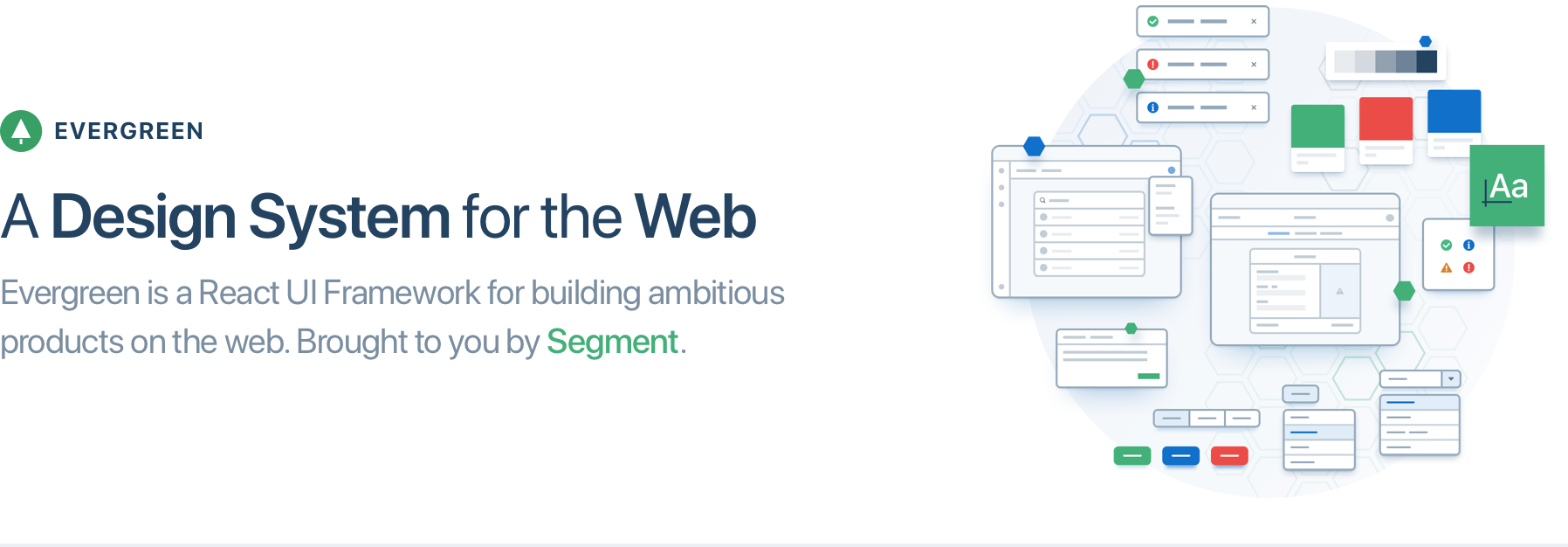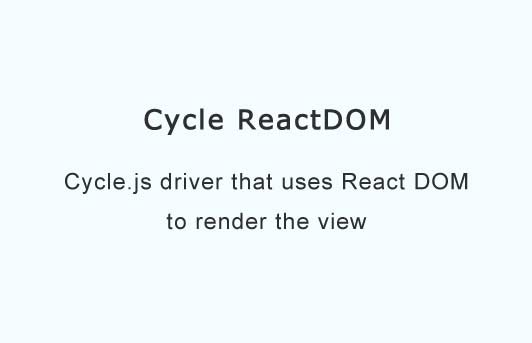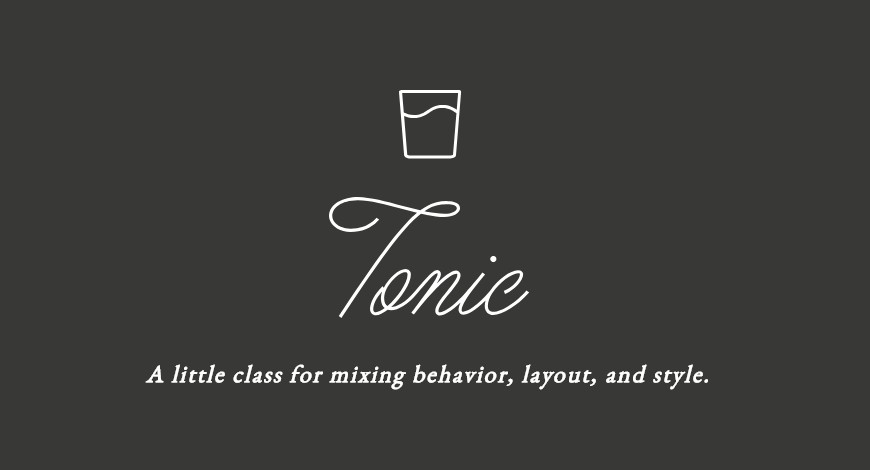Evergreen
React UI Framework for the Web Build and Maintained Open‑Source by Segment.

- Evergreen v4 coming soon
- Prerelease:
yarn add evergreen-ui@next - View PR
- View v4 Documentation (WIP)
- Prerelease:
- React 16
- Documentation (WIP)
- View Live Storybook
- Presentational React components
- Powerful component API with ui-box
- Dedicated UI Development Environment with React storybook
- Easy adoption because of CSS-in-JS
- Easy Server Side Rendering (SSR) and automatic hydration
- Interested in Evergreen? Come work for Segment!
- Brought to you by Segment
Core values of ? Evergreen
Evergreen is built on the belief that you can never predict all future requirements,
only prepare for it. Instead of creating fixed configurations that work today, Evergreen promotes building systems that anticipate new and changing design requirements.
Evergreen is built on the belief that things should work out of the box with smart defaults, but also offer full control when needed. For example, Evergreen uses CSS-in-JS and builds on top of the Box component in ui-box.
Evergreen is built on the belief that using Evergreen and contributing to Evergreen should be a pleasant experience. We prioritize documentation and all the tools for a solid developer experience. We advocate respect and inclusivity in our writings and interactions.
Install and use components ?
? Evergreen is made up of multiple components and tools which you can import one by one. All you need to do is install the evergreen-ui package:
$ yarn add evergreen-ui
# or
$ npm install --save evergreen-ui
A working version, assuming you are using something like Create React App, might look like this:
import React from 'react'
import ReactDOM from 'react-dom'
import { Button } from 'evergreen-ui'
ReactDOM.render(
<Button>I am using ? Evergreen!</Button>,
document.getElementById('root')
)
FAQ
Does Evergreen support theming?
Evergreen currently does not support theming.
Is theming support on the roadmap?
This project is originally build to support the development of product at Segment. This is also the reason theming is not our short term priority. It is on our longer term priority list and hopefully will be supported later in 2018. Expect a clearer roadmap available before that.
Learn more about the theming roadmap
How does Server Side Rendering work?
Evergreen bundles 2 CSS-in-JS solutions, from glamor and ui-box. To make it super easy to do server side rendering and hydration, Evergreen exposes a extractStyles() function that will do SSR for both at once.
- How to use it with Next.js in the ssr-next example app.
- How to use it with GatsbyJS
Contributing to Evergreen
Step 1. Configuring your editor ⚙
If you are using Atom, make sure to install the prettier-atom, linter and linter-xo packages.
All the configuration for prettier and xo is in the package.json.
You shouldn't have to configure things separately, please file a issue if there's a problem.
Step 2. Get storybook up and running ?
To actually start seeing the components you have to run React Storybook:
$ yarn dev
Step 3. Learn more in the Contributing guide ?
Please take a look at the contributing guide and roadmap to better understand what to work on.
Scripts explained ?
Inside the package.json there are a bunch of scripts that this repo uses
to run the project in development and to build the project.
Below you can read a description of each script.
yarn dev
Starts the development React Storybook.
yarn test
Lints the JavaScript files using XO and then runs the unit tests using AVA.
yarn build
Builds all of the JavaScript files using Babel.
yarn clean
Removes all untracked files (git clean -Xdf).
yarn release
Releases new version of Evergreen (requires np to be installed globally).
yarn create-package
This command scaffolds a package with no specific boilerplate. It's useful for creating utilities.
For the following command:
yarn create-package utils
The following file tree will be generated:
/src/utils
├── /src/
└── index.js
yarn create-package:components
This command scaffolds a package with React component(s) boilerplate.
You can pass one or more components to this command.
For the following command:
yarn create-package:components typography Text Heading
The following file tree will be generated:
/src/typography
├── /src/
| │── Text.js
| └── Heading.js
├── /stories/
│ └── index.stories.js
└── index.js
yarn run create-docs-template
For the following command:
$ yarn run create-docs-template layers Pane Card
The following file tree will be generated:
/src/layers/docs
├── index.js
└── /examples/
├── Pane-basic.example
└── Card-basic.example
Manual steps for docs
This yarn run create-docs-template script is far from perfect and still requires manual steps. This includes:
- Making sure to use the right examples and write some docs.
- Configure
docs/utils/getComponent.js - Configure
docs/components/ComponentsSidebar.js





